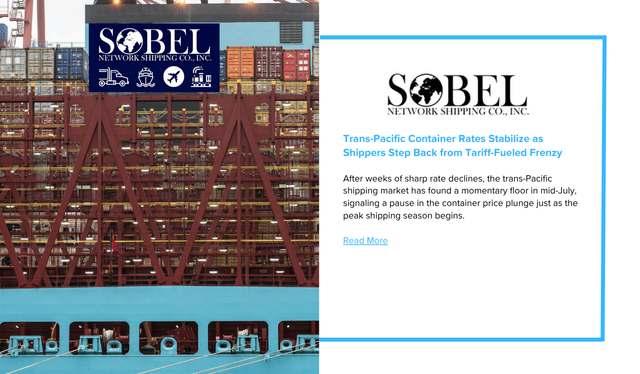After weeks of sharp rate declines, the trans-Pacific shipping market has found a momentary floor in mid-July, signaling a pause in the container price plunge just as the peak shipping season begins.
According to a market update from analyst firm Xeneta, spot rates for Far East to U.S. West Coast shipping held at $2,313 per forty-foot equivalent unit (FEU) as of July 18, while East Coast rates fell to $4,314 per FEU, marking a 7% drop since July 14 and a 26% decrease since the end of June.
The most dramatic shifts remain on the West Coast lane, where prices have dropped a staggering 58% since their June 1 peak, reflecting a steep correction after months of frontloading driven by tariff uncertainty. The East Coast has also seen a 35% fall in the same period. The gap between West and East Coast rates has widened significantly to $2,000, nearly double the differential recorded in early June.
Xeneta analyst Emily Stausboll notes the trend highlights a shift in shipper behavior: “Shippers can’t frontload forever, no matter what happens with the tariffs… the longer-term direction for rates was always going to be downward.”
Capacity reductions by ocean carriers have somewhat softened the rate collapse, but the industry still faces an uphill battle to preserve margins. Global trade players are adjusting their lane strategies, adding capacity to more profitable trades — a move that risks oversupply in the very markets they are chasing.
European lanes diverge
Not all trade lanes are experiencing the same dynamics. Far East to North Europe rates jumped 18% since June and 78% since late May, largely due to port congestion, labor unrest, and logistical disruptions like Rhine River water levels. In contrast, the Far East to Mediterranean route is sliding, reflecting weaker demand similar to U.S.-bound trades.
Meanwhile, North Europe to U.S. East Coast rates stand at $2,011 per FEU, well below Asian-origin lanes, underscoring shifting rate pressure based on origin-destination dynamics.
Carriers continue to reshuffle vessels between routes in search of higher yield. However, as Stausboll puts it, “by adding this capacity, they risk ruining the party for themselves on the more profitable trades.”
As the August 1 deadline for new U.S. tariff impositions looms, supply chain professionals are watching for rate rebounds — but for now, stability may be the best-case scenario.


